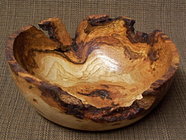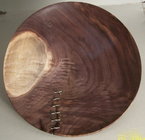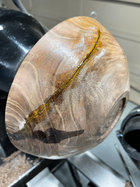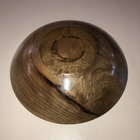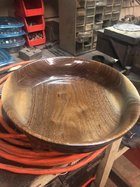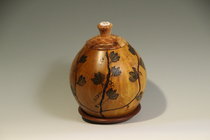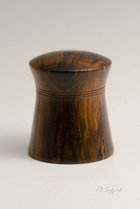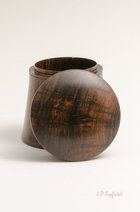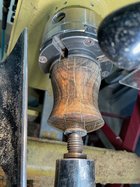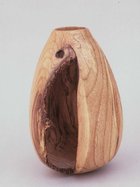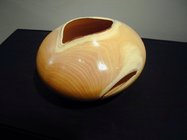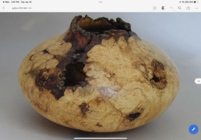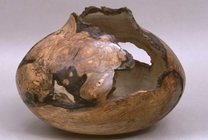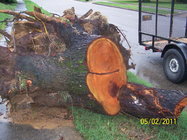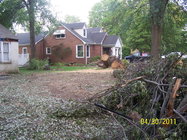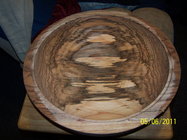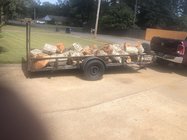Who has spent countless hours trying to find a way to fill a crack or void in a nice chunk of wood? What is the secret that keeps the media used in the cracks or voids from chipping out in tiny pieces? A crack going across the grain seems to look crummy no matter what I try and fill it with. I've tried coffee grounds, sawdust, resin, colored ca glue. It all chips out, or sands at a different rate than the surrounding wood, causing dips and high spots. Since many of us cannot afford to buy wood because we spent everything we have on tools; it seems we are destined to take whatever we find.....and that always seems to be cracked, full of voids, or dried out incorrectly. Any tips that you have learned with fixing cracks and voids will benefit many turners on this forum! Here's a couple of example of cracks I filled.
Most are ones that I wouldn't even give away.
John you have to befriend some people that remove trees, I have never bought my turning wood, safe a few small pieces of Padouk, Ebony and Purpleheart .
For me it was the. city's wood dump mostly and then hydro crews and road maintenance crews, a couple of times got wood from the tree people that look after peoples property.
I also went and looked where the developers were worked and doing all the roughing in work of trees and sewers etc., they had trees removed and were glad for me to take some of the wood off there hands, anyway you have to keep you're eyes and ears open, that way you will get fresh green wood you can turn, pre-turn or turn to finish, than dry the pieces.
Slow drying is the only way to get wood turnings without splits in hem.
I use the brown paper bag with nothing else in it folded close and set away in a cool place, as I have been preaching this for years and years, it works.
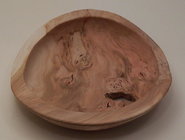
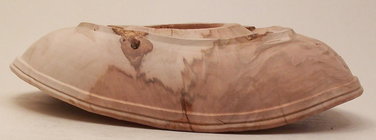
Like the above Canada plum bowl, yes it warped severely, but it did not split.
And yes it takes time for these turned pieces to dry, but the end results are worth it.
Now that does not mean that we don't have to fill the wood sometimes, like these 4 bowls that I did add filler into, the first one is larger Black Willow burl (24") I let it sit in our house for 2 years I believe, because of all the burl eyes that dry inward like a Knott, I did then fill all those splits with fine coffee ground that was slightly damp so that the CA woold sink in and harden, as dry coffee ground does not like to absorb the CA.
The Elm platter with the tile in it has a small bark inclusion, and I just needed some CA to keep it solid in there, stil fine after 5 years as I just saw it this past weekend.
The next one was a lot more work, as it had the Apple tree's grafting seam in there that had not grown totally grown together, I did fill that with coffee ground, I like that stuff as it is and looks like dark wood, and we have lots of it

Next is a Siberian Elm bowl that had an opening from a branch and the edge was also missing a small bit of wood for the same reason, some painters tape and again some coffee ground filled with CA, I often use thin CA first and the thick CA after to get it filled good, this last two where filled before final turning and finishing, rather than trying to fill a finished piece that then has to be. again sanded.
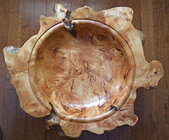
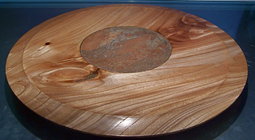
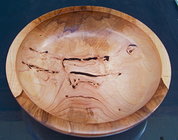
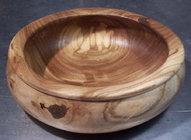
Of course I don't always fill splits and voids, as the piece will look good to me with these things in it.
Also a split like in the Black Walnut piece, I knew it had a split, but could also see that it had nice ripply grain in the wood, so I turned it anyway, I'm not a fan for trying to glue splits like that, they look bad and will never hold in the long time, so I decided to use some brass wire to sow it together, and I was pleased with that result, also a piece we still have.
